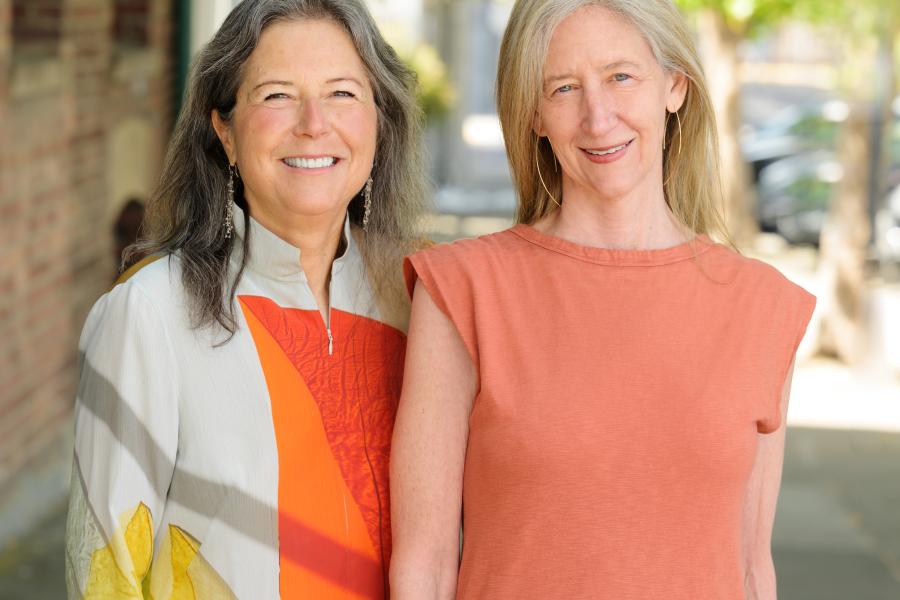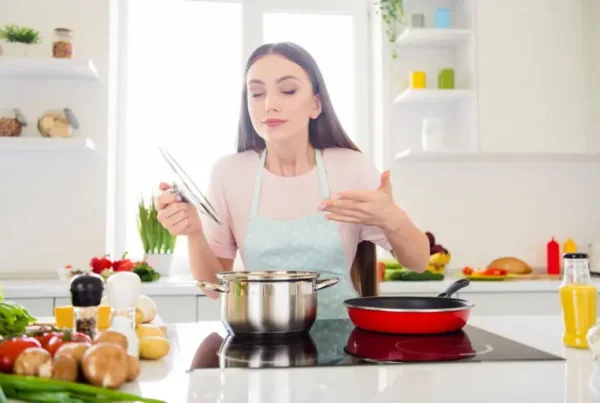Ivy Ross and Susan Magsamen
When Susan Magsamen made the decision to end her first marriage, she faced emotional and difficult days working through not only her own feelings but those of her young sons. It took a lump of one child’s clay to change all that. As she relays in her new book Your Brain on Art: How the Arts Transform Us (Random House, March 2023), she “spontaneously began to sculpt. What emerged was a statue of a woman on her knees, her arms raised with hands reaching for the sky and her head leaning back, sobbing in utter speechless despair.” Soon, she writes, she herself was in tears.
We might all recognize this action as an example of using our creativity to express and release pent-up emotions. But as Magsamen, the founder and executive director of the International Arts + Mind Lab at Johns Hopkins Medicine’s Pedersen Brain Science Institute, and her co-author Ivy Ross, vice president of design for hardware product at Google, show repeatedly, it was much more than that. It turns out that rhythmic, repetitive movements with the hands can release serotonin, dopamine, and oxytocin in the brain and alter brain wave activity, which collectively contribute to a calmer, more reflective state.
Magsamen and Ross have both enjoyed long careers in educational and childhood development. In the book, they explore how the emerging field of neuroaesthetics is proving that art, art-making, and sensory-rich environments can generate chemical and physical responses that help us feel better, learn quicker, and live life more fully.
The authors begin their exploration of this nascent field and its potential by walking us through the science of the five senses. Take smell, for instance. After the molecules released by a substance tickle your nose’s receptors, they travel to the neurons that line the nasal cavity and connect to the brain’s olfactory cortex, a section associated with emotions, memory, and, well, good vibes.
The power of making or beholding art, the authors argue, can be similarly palatable. And, as Magsamen and Ross demonstrate through a variety of research and case studies, the transformational qualities of color (blue and green can reduce anxiety), biophilia (the power of connecting with nature and fellow humans), poetry and other artistic expressions extend far beyond enhanced wellbeing to restoring mental health, healing the body, amplifying learning, fostering community and an overall flourishing.
Some of the book’s most moving examples center on boosting the mind-body connection through sound, vibration, and dance to help those dealing with trauma, mental illness, and neurodegenerative diseases. For example, we encounter therapists who use dance to get Parkinson’s patients back on their feet and music to activate memories in dementia patients. In both cases, rhythm and movement marshal multiple areas of the brain, the authors explain, so if one pathway—coordination or language, say—is cut off, others are ignited by the release of dopamine (the loss of which inhibits movement) and oxytocin (which can counteract depression and anxiety).
There’s also evidence that exposure to the arts can aid in disease prevention and pain management, encourage childhood development, and literally help us live longer.
The Hub sat down with Magsamen to talk about her new book and the vast potential of the neuroaestheics field.
What prompted you to write Your Brain on Art?
We wanted to start a conversation about the importance of arts to our health and wellbeing and to explore how the science of neuroaesthetics is proving this. Aesthetics, the appreciation of beauty and art, impact every aspect of our lives, and we wanted to show how we can enjoy those benefits.
How did you and co-author Ivy Ross divide up responsibilities?
Ivy’s network is filled with designers, technology experts, and artists, and I partner with scientists and artists, so there’s both an overlap and some differences. When we sat down to figure out how to put the book together, we each brought people and their stories with us. Then we interviewed more than a 100 of them virtually. And we [interviewed them] together, which was very important because we could both be engaged in the conversation [and bring our different points of view].
Can you talk a little bit about the surprising findings, detailed in the book, that children exposed early to artistic experiences can enhance their ability to perform executive functions, such as meeting goals and following multiple-step directions even when distracted.
The research we found often debunked mythology, and this is a great example. Despite the stereotype, artists are incredibly disciplined and must be very organized. The processes really require that. So it turns out that practicing art, no matter your talent, helps develop those skills.
A sense of curiosity is directly related to what you refer to as flourishing—how can people tap into their own curiosity and encourage their kids to do the same?
I think we are wired to be curious, but we have [fostered] a society where we’re afraid for our kids’ safety, so we schedule them down to the minute to minimize any risk. Curiosity, though, thrives on looking in corners, taking the back roads. It’s boundless in that it doesn’t respect boundaries and it can grow. The arts help encourage curiosity in both ways. You can go see a strange new play or an exhibit by someone you aren’t familiar with, an experience that can expand your mind and your children might take notice of the effect. The second way is to encourage the arts: things like doodling, humming in the car, making a simple meal together. You never know what you might inspire from such a simple act—maybe a future musician or chef, or just a pleasant memory that brings about a smile.













